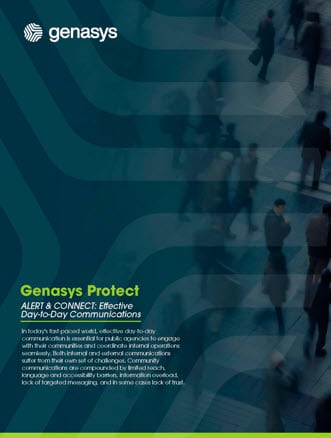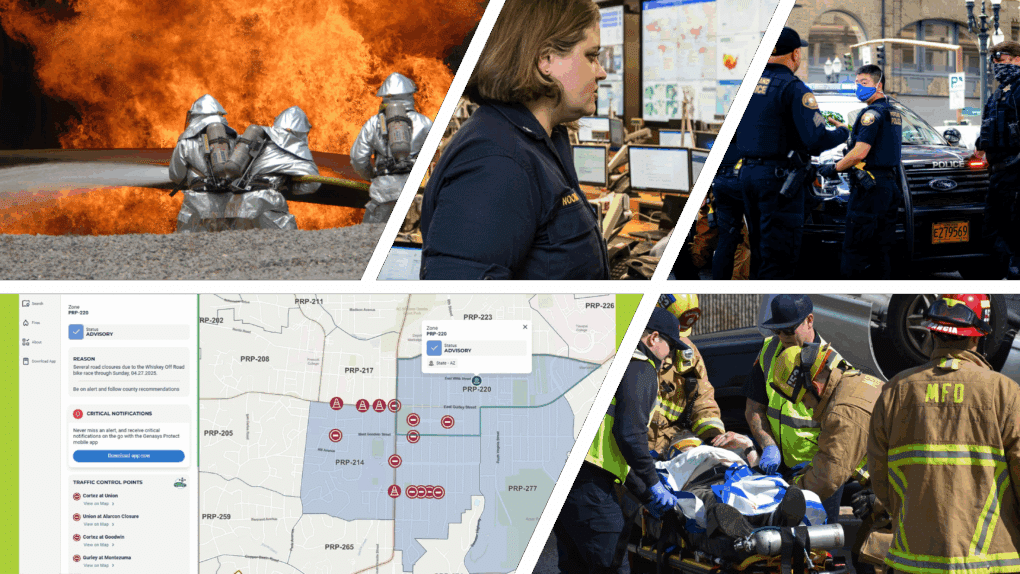
We have traveled nationwide to meet with numerous law enforcement agencies and their leaders after high-profile incidents, mass shootings, and disasters. Shortly AFTER a crisis, law enforcement leaders realize there has to be a more compliant and efficient method to manage the chaos. Our profession’s planning, preparation, and training do NOT prepare our leaders for the communication challenges, complexities, and hurdles of inter-agency coordination following a crisis. Every agency has voiced major concerns just days into the investigation, with no solutions to address their concerns…until now.
Here’s an overview of what agencies typically face during and after a crisis:
- Typically, as many as 10–15 agencies respond to a major crisis incident or disaster.
- Many responders are ‘self-dispatched’; employees hear about it and respond.
- City police, county sheriffs, state police, federal law enforcement, district attorneys, state attorneys, local elected officials, and state-wide elected officials are often at the scene in less than an hour.
- In some crises, even presidential candidates respond to the scene in as little as 24 hours.
- There are often contentious discussions as to who will be the lead investigative agency. When there is a suspect in custody and very high-profile trials follow, it becomes very political very quickly.
- Most of the time, it is agreed that the local city police department (in major cities) will be the lead investigative agency, with support from county, state, and federal agencies.
- Inter-agency investigative supplemental reports, coordination and sharing of these reports, inter-agency communications, and multi-agency decisions consistently prove to be very complex and not necessarily efficiently handled.
- In one recent incident, more than 400 personnel were logged at the scene from 13 responding agencies.
- There are NO centralized communication channels and NO safe platform (encrypted and compliant) to share intelligence, photos, investigative updates, discuss progress, or host executive collaboration.
- It is becoming more common for trial and prosecution that ALL communications and devices are retrieved so that all texts, messaging, and voice messages can be logged for the prosecution. This is being demanded by states’ attorneys and DA’s in preparation for defense attorney’s use.
- This is a nearly insurmountable challenge, as there could be thousands of texts alone and NO way to get all of that data in a timely manner. Some investigators are instructed to call every employee on the crime scene roster, open up their SMS or text platform, and photograph EVERY text during their response and investigation duties. This could be thousands of messages, photos, and other communications that take months to complete.
- There are significant concerns about the use of consumer apps by law enforcement. Apps like ‘WhatsApp’, ‘Signal’, ‘Confide’, and ‘GroupMe’ literally maintain possession and control of all data. Investigators could be restricted from gaining access to users’ accounts, and these app providers do not need to give access to law enforcement (recent “Apple vs. FBI” ruling).
- Employees and work units are often required to stop working on other investigations to focus on the incident, leaving their services unavailable to local victims or to respond to other serious crimes in their jurisdiction.
SOLUTION
With Genasys Protect CONNECT, you are deeply immersed in every aspect of crime scene management, evidence gathering, and communications challenges (state and federal compliance, unsafe text messaging, and the use of non-compliant consumer apps). After demonstrating CONNECT’s platform and compliant crisis management solutions, most agencies deploy CONNECT immediately. Here are examples of how these crisis incidents could have been managed from the beginning, starting with the complex investigation and continuing through to the conclusion of the grand jury and trial:
- Inter-agency Crisis Room: At the start of any crisis incident, Dispatch and/or Command can create a private collaboration room and add every critical response team and investigative unit to this room. From any iPhone or Android, MDT/MDC, desktop or laptop, every one critical to the success of the investigative mission can be co-located and share all updates, decisions, and chats in ONE location that is secure, encrypted, and state/federal compliant.
- In-platform ‘Direct Messaging’ (DM): This service is CONNECT’s answer to SMS/text messaging and other consumer messaging apps. Every DM is stored on the agency’s platform forever. This reduces the need for multiple evidence techs and detectives to photograph thousands of screen images and texts from consumer apps
- Agency Alerts: Significant updates on the day of the crisis can be sent instantly to all agency personnel. During the investigation, major updates can also be sent to all personnel, so rumors can be controlled and managed instantly by Command.
- Guest accounts: In advance of any crisis or mass incident, agencies can create CONNECT “guest rooms” and invite key stakeholders to join. Guests are limited to the contents of that room and do NOT have access to other agency information. However, they do receive instant updates and have the facts they need to address the public and the media.
- Media Relations and PIO Updates: In addition to using social media and scheduled press briefings, all local and national media personnel can be staged in a ‘guest room’ BUT receive more details than provided to the public. Again, instant sharing of controlled information and intelligence from on-site responders is key to the facts being efficiently reported versus rumors from protestors and residents.
- District Attorney/U.S. State Attorney: By having these individuals involved as ‘guests’ in the investigative room, they receive real-time investigative updates. No more long phone calls and formal meetings to keep them updated. At any time prior to the grand jury they have full access to ALL data by requesting an “executive audit” from the lead agency. That audit can be created in moments and sent directly through the CONNECT platform.
- Case Closed: Once the crisis and investigation have concluded, the manager ‘archives’ the private room, and ALL data, texts, voice, chats, photos, and videos are maintained in their original format in the agency’s encrypted CONNECT cloud account until they are ‘un-archived’ in preparation for trial.
Contact Genasys Protect CONNECT to schedule a demo and see the major benefits your agency can get with CONNECT.

















